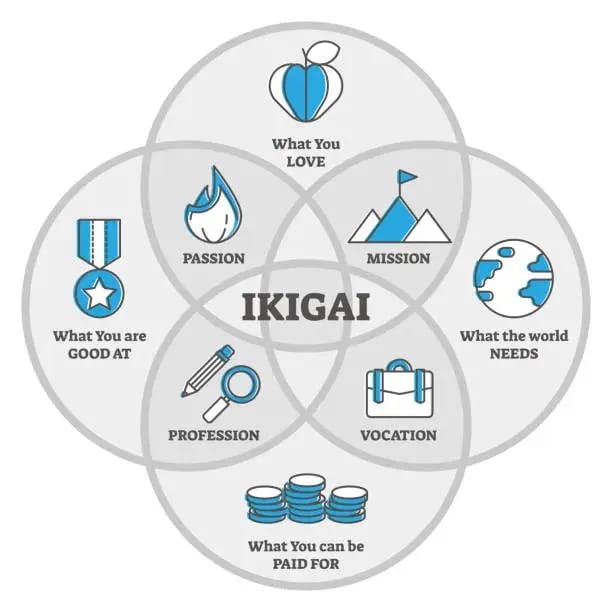- Pudgy Ponders: One Pudgy Penguin's view on startups, life and web 3
- Posts
- Pudgy Ponders: What Web3 Projects Can Learn from Web2 Startups
Pudgy Ponders: What Web3 Projects Can Learn from Web2 Startups
What tried and true startup strategies will work in web 3?
What Web3 Projects Can Learn from Web2 Startups
Hey founders, builders, and degens…
Let’s talk about something that doesn’t get enough air in crypto: the wisdom of Web2.
I know, I know... Web3 is supposed to be a revolution.
Decentralization, ownership, composability, yes, it’s all super exciting.
But here’s the truth:
Some of the best lessons for building successful Web3 apps are hiding in plain sight in the trenches of Web2 startups.
Before I got into Web3, I spent years helping Web 2 startup teams launch, fail, iterate, and was part of an exit and building a unicorn, which was a much bigger deal at the time than it is today.

So today, I’m distilling a few things Web3 can and should steal from its predecessor.
Let’s dive in.

1. Good UX Isn’t Optional
Web2 startups obsess over smooth onboarding, clean interfaces, and a frictionless user experience.
Every extra click costs you money and loses you customers.
Think about ordering a ride on Uber. You push a couple buttons. GPS knows your location. A car arrives. You get safely to your destination. Your card is on file so you exit without having to haggle with getting change or an ornery credit card machine. It works seamlessly without having to think.
Web3?
Not so much.
Connecting wallets, switching chains, copying and pasting contract addresses, dealing with gas fees, failed transactions that used to cost a small fortune, it’s a maze few were able to navigate the early years of. Many didn’t survive. I’m old enough to remember dial-up internet. It was awful. And while early adopters might tolerate it, mainstream users won’t if things don’t get better.
Web 3 UX needs to get better and fast.
While pixel art is still cool, tech that works at pixel speed is wack.
👉 Lesson: Make the tech disappear. Users shouldn't need to understand private keys or bridges to enjoy your product. Abstract is the first seamless wallet experience and ecosystem I’ve used in crypto. The Abstract homepage allows me to see almost everything going on on the chain in a single location, without having to do more than put in my email to enter the portal. Take notes, this is where the puck is going.

2. Find Product-Market Fit Before You Raise Millions
In Web2, scrappy teams test MVPs, pivot fast, and grind until something clicks. Only then do (the smart ones) try and scale. I know, many web 2 startups raised money on hype but most of those didn’t pan out. Lesson learned.
Web3 projects?
Often the reverse.
Many try and raise big rounds pre-product because of a slick whitepaper or viral thread. This didn’t end well for most web 3 companies that launched from 2021-2024 and VCs are also to blame throwing huge amounts of money at startups without doing their due diligence.

Now don’t get me wrong, funding is great.
But when you raise before validating your value, you give away too much of the company too soon, and risk messing up your cap table and making your company uninvestable in the future.
👉 Lesson: Talk to users. Test painful problems. Launch something tiny that works and improve from there. Do things that don’t scale when it’s early. PMF still reigns, whether you're centralized or not. Despite living in an attention economy (which is a post for another day) eventually attention needs to be harvested and monetized.

3. Solve Real Problems, Not Just Cool Ones
A lot of early Web3 and AI ideas sound cool but are not useful.
Startups must solve meaningful problems people are willing to pay for.
Startup that solve meaningful problems people are not willing to pay for have a name; non-profits.
Nothing against non-profits, I’ve started two (one is still going today), but they are a different business model.

Web2 startups that win?
They solve pain that people are willing to pay for.
They have real users who love the product.
👉 Lesson: Ask yourself: “Would anyone use this if it weren’t crypto?” If not, it might be time to reframe. If you want to generate startup ideas without using AI, grab a notebook and list 10 problems you have in your life. Odds are many others have similar problems and likely some of them people would pay to solve. If you want to use AI, follow this prompt: I’m passionate about (interest 1, interest 2, interest 3), what are 5-10 challenges people with these interests generally face?

4. Build a Cult (The Good Kind)
In Web3, community is the product.
And some of the most successful projects, like Pudgy Penguins, didn’t just gather users.
They built a movement.

In Web2, community often meant FAQs, support tickets, dashboard KPIs, and occasional meetups.
In Web3, it's lore, memes, merch, A+ comms, and identity.
People want to belong, not just participate.
And yes, you should aim for a cult-like following, but the kind rooted in shared joy, PFPs, and emotional resonance.
Not just hype.
👉 Lesson: Build with your community, not just for them. Give them a role in the story. Make them feel seen, valued, and part of something bigger. It’s not about extracting value, it’s about co-creating it. That’s how you go from a project… to a brand people tattoo on their bodies.

5. Support and Onboarding Are Secret Superpowers
The best Web2 startups are obsessed with helping users win. Paul Graham famously asked Brian Chesky, founder of Airbnb, in the early days of the company, where his customers were. When Brian, answered NYC (he was in SF at the time), Paul had barely gotten the words out of his mouth before Brian realized he needed to be in NYC getting to know his customers. He needed to better understand, what their onboarding challenges were with listing their properties and rumor has it Brian even helped take photos for some of his first customers to list their properties on Airbnb.
To this day, Brian has his own house on Airbnb to stay connected to his users.
Web3?
Way too often, it’s self-service support and users are dropped into the chaos of Discord or Telegram or sent to figure it out on Twitter / X which rarely results in a support experience they’d tell their normie friends about.
Opensea’s support was a disaster for far too long. Nuf said.
👉 Lesson: Make your onboarding and customer support feel like a warm hug from your favorite person. Great documentation, in-app guidance, and fast support can be your moat. Especially if you're targeting non-native crypto users.

Final Ponderings
Web3 is bursting with innovation and opportunity, and that’s what makes it exciting. But it’s not built in a vacuum.
So if you’re a founder or would be founder, ask yourself:
What did the best Web2 startups and products do right and how can we remix those lessons into this new era?
What skills do I need to learn to build my company?
Do I have what it takes to build a company as a solopreneur or what skills do I need from a co-founder?
Okay, that’s all for this week. If you’ve read this far, thank you. If you found any of this helpful, please share it with someone who would benefit from it. If you want to discuss any of it, the best way to reach me is on X at @lovingNFTs.
Until next time….
Hutch. 🐧💭
